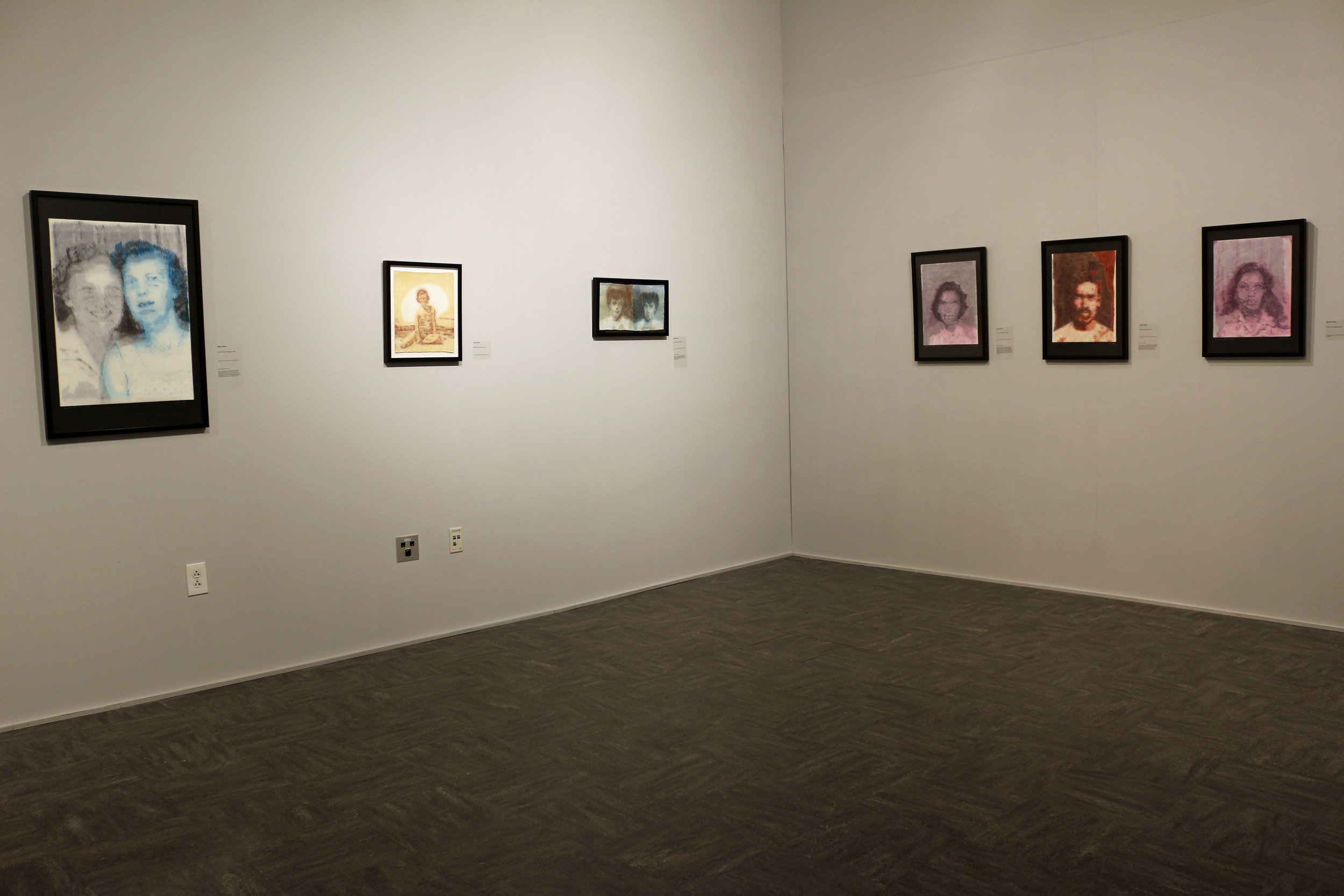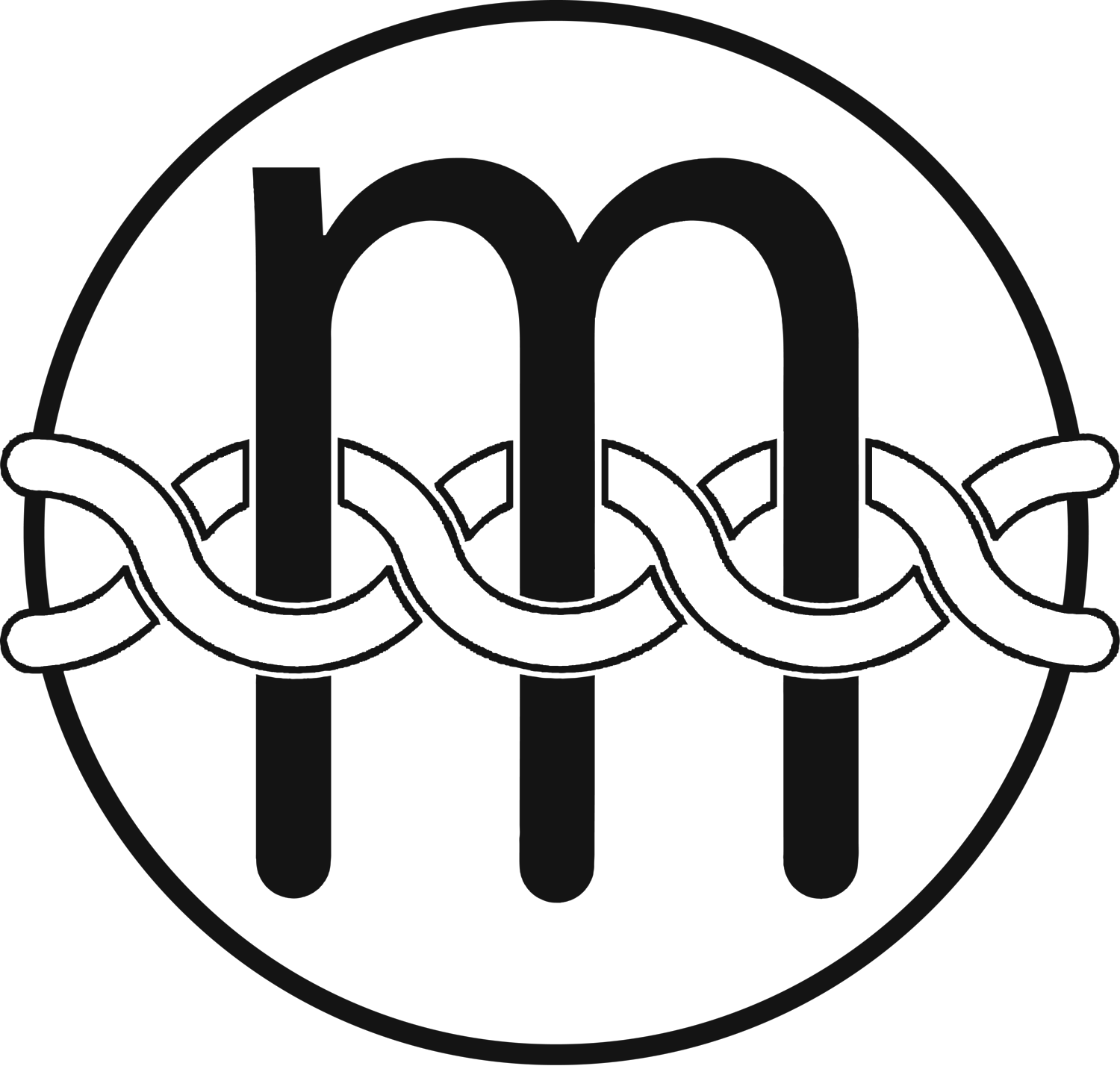
Ghosts and Strangers (2016/17)
Ghosts and Strangers was an exhibit of work created from 2014-2017 that showed at both Lowe Mill Arts and Entertainment in Huntsville, AL and The Galleries at CSU, Cleveland State University, Cleveland, OH. Below are exhibit photographs and text from The Galleries at CSU.
The same image can tell different stories.
Materially, my pieces involve weaving, cloth, and the nature of layers. Most of my current body of work deals with what gets lost in translation or interpretation of a family’s history. Family photographs have a place in recording history and previous generations, which leads to one’s own understanding of reality. Over time, we are separated from knowing the person or people photographed, and we become more speculative about our understanding of those photographs.
The process of weaving inherently holds a linear and mathematical grid, but dye work can be free-flowing, and it does not hold to a grid. My process is influenced by the visuals produced by the Japanese techniques found in ikat and kasuri textiles. The development of my dye painted warp and weft process comes from the Cleveland-based artist Hildur Ásgeirsdóttir Jónsson. I modified the process I learned from her as a studio assistant to produce the particular effect of a ghosting print or a trace shift. The process is both time-consuming and reflective. It involves weaving, unweaving, and reweaving fully dye painted cloth. There is a simultaneous allowance for both full control of the threads and disorderly overlayed patterning in the way the image comes together in its final form. This process causes the woven grid to shift, and the portrait to become pixilated, while holding the familiarity of the face. The result is a translation of a photograph, which, in turn, is an interpretation of the memory of a person.
Ghosts and Strangers is, for viewers and myself, a collection of varying truths and fictions seen through differing layers. Each viewer internally overlays and creates a relationship that may or may not exist between the image and themselves.
Ghosts can be the echo of a person we have known or been told about by those who knew them. What we understand about a person is only a memory or ghosting of who they were. Similarly, the impression of someone known to us is most strongly created only by the time our lives have overlapped. Knowing a person in their older age influences how we imagine them as they were in their youth.
Strangers can be both known and unknown to us. One may know as much or as little about a family member never met as one may know of a stranger pictured in a found photograph. What the viewer believes they are seeing creates a story of what that person’s life was like through interpretation and projected emotions.
Who and what are forgotten can be intentional or accidental. The memories we recall can be intentionally or accidentally distorted, changing without our realization. Our memories, when we recall them, can bind with other memories, producing an unclear view that sits between truth and fiction. As a memory is recalled, it becomes layered and modified by the process of retrieving that particular memory, and combined with the current memory creations, it is my hope to visually capture these ideas within my work.


























